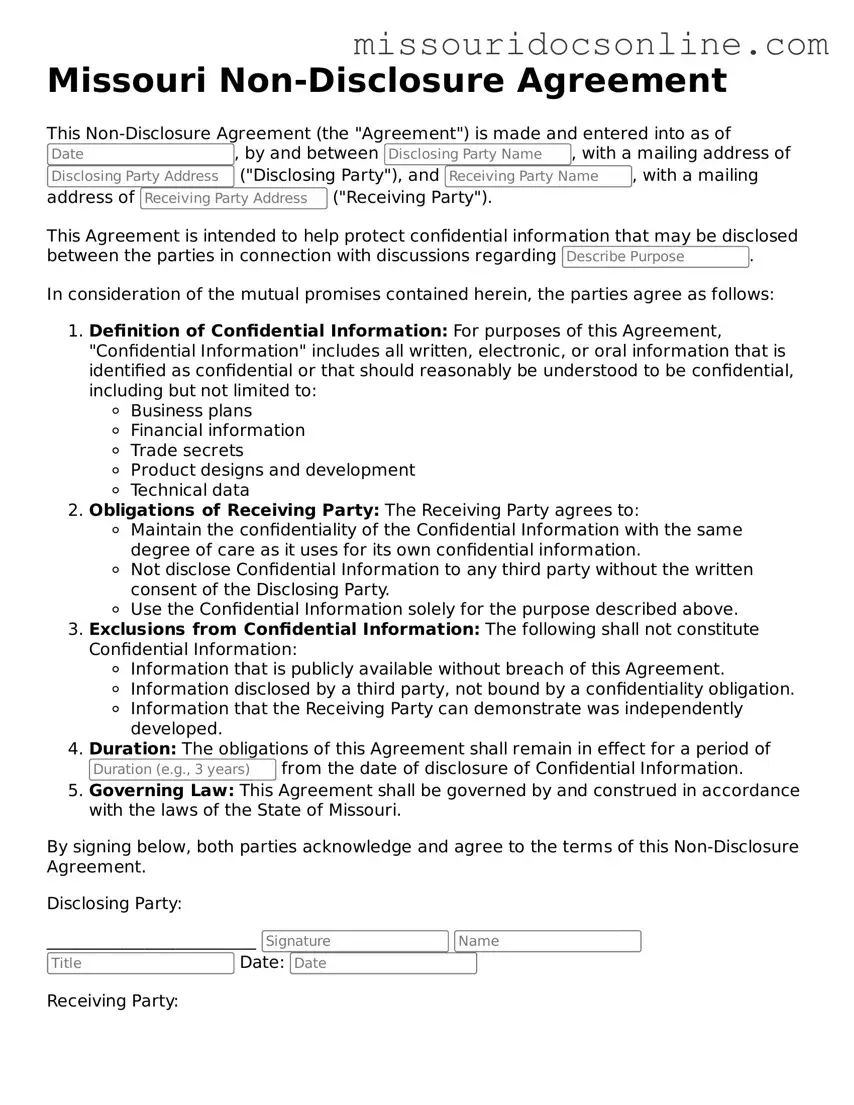Detailed Steps for Filling Out Missouri Non-disclosure Agreement
Once you have the Missouri Non-disclosure Agreement form in front of you, it's time to fill it out carefully. This document requires specific information to ensure it is valid and enforceable. Follow the steps below to complete the form accurately.
- Begin by entering the date at the top of the form. This is important as it marks when the agreement takes effect.
- Next, fill in the names of the parties involved. Include the full legal names of both the disclosing party and the receiving party.
- Provide the addresses for both parties. This should include street addresses, cities, states, and zip codes.
- Clearly define the confidential information. Describe what information is considered confidential and should not be disclosed.
- Specify the purpose of the disclosure. Explain why the confidential information is being shared between the parties.
- Indicate the duration of the confidentiality obligation. State how long the receiving party must keep the information confidential.
- Include any exceptions to confidentiality. If there are situations where disclosure is allowed, list them here.
- Sign and date the agreement. Both parties should sign the document to make it official.
After completing the form, make sure to keep a copy for your records. You may also want to provide a copy to the other party involved in the agreement. This ensures that everyone has the same understanding of the terms laid out in the document.
